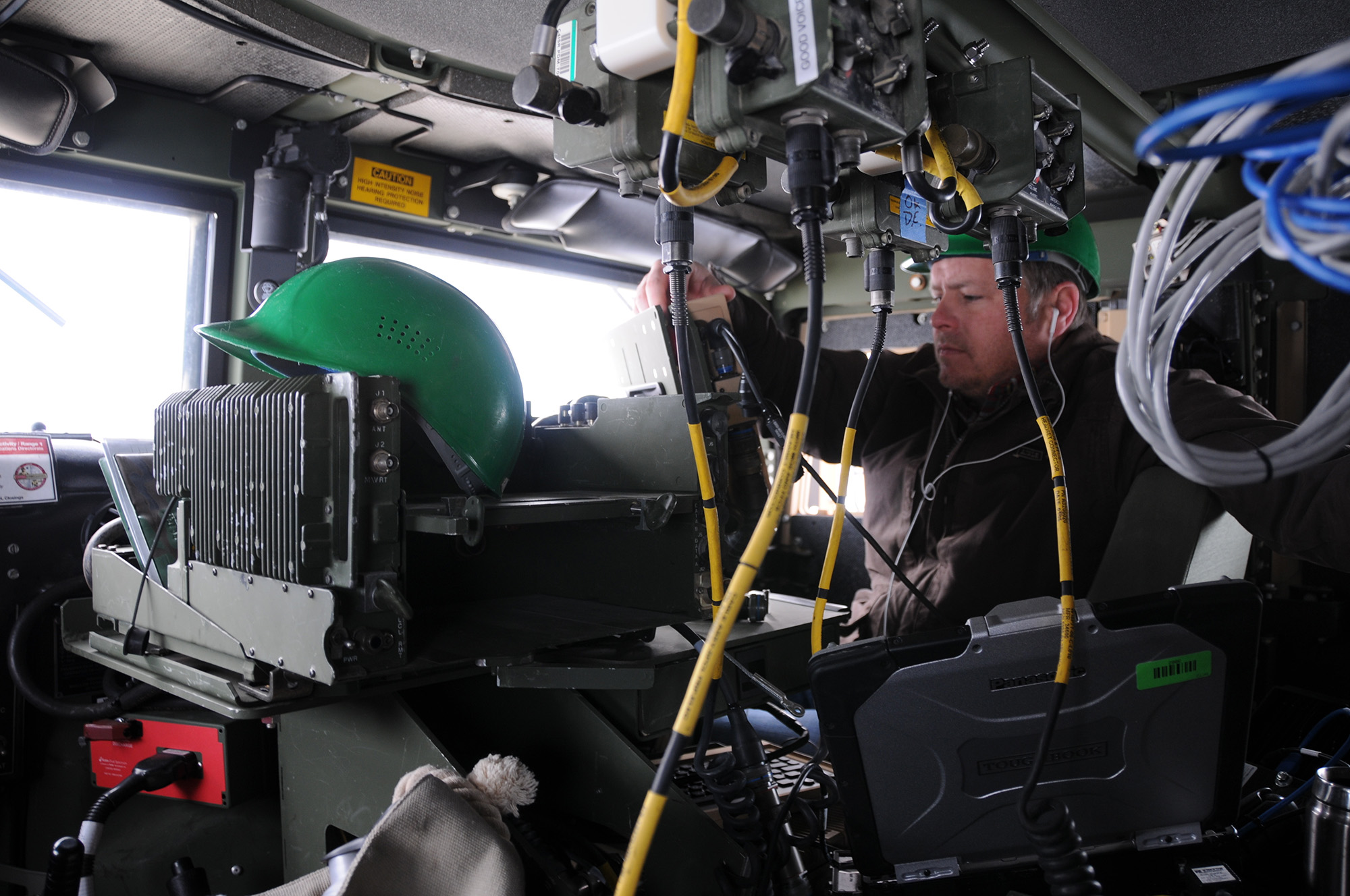
By Sgt. Devon Bistarkey (PEO C3T)
JOINT BASE MCGUIRE-DIX-LAKEHURST, N.J. – The Army’s predominate friendly-force tracking tool known as Blue Force Tracker (BFT), used by nearly every ground and aviation vehicle across the fleet, could soon be part of a satellite channel sharing initiative.
Currently, BFT-1 and BFT-2 systems utilize unique satellite channels to send and receive Position Location Information (PLI) and Command and Control (C2) data which allows commanders to visualize assets within the operational sphere. While this is operationally effective, it comes with significant costs. Validation from single beam testing offers a forward-thinking solution.
On Jan 27, the Army conducted a channel sharing aviation mobility operational test at the Communications-Electronics Research, Development and Engineering Center (CERDEC) Intelligence and Information Warfare Directorate (I2WD) Flight Activity, located at Joint Base McGuire-Dix-Lakehurst, N.J., where system engineers operating both BFT-1 and BFT-2 from ground and aviation vehicles assessed the performance data of each system under shared channel settings.

Operating Blue Force Tracker (BFT-1 and BFT-2) from ground and aviation vehicles, system engineers conducted a channel sharing aviation mobility operational test at the Communications-Electronics Research, Development and Engineering Center (CERDEC) Army aviation facility “hang 5” located at Joint Base McGuire-Dix-Lakehurst, N.J. on Jan. 27. (US Army photo by Devon Bistarkey)
“The intent is that when combined, units won’t be able to tell the difference,” said Jason Parks, system engineer, Project Manager Mission Command (PM MC). “Same service, same data – lower cost.”
The scope of the test examined the performance of transceivers in current operational conditions. BFT transceivers mounted on vehicles including a UH-60M (Blackhawk), an aircraft capable of producing the greatest rotor blockage, were used to evaluate data impact between platforms at different power ranges. Simulated data including PLI reports and C2 messages were successfully transmitted consistently between systems.
Testing efforts to validate simultaneous operation of both systems onto a single beam represents an operational benefit that is seamless to the Soldier.
Along with validation from two separate assessments prior to the operational test conducted at the CERDEC facility, PM MC has evaluated channel sharing as technically and fiscally effective.
“Operating these two systems within the same satellite channel will provide PM MC the opportunity to significantly reduce commercial satellite lease costs,” said Lt. Col. Michael Olmstead, product manager, Joint Battle Command-Platform (JBC-P) part of PM MC. “Additionally, success of this test shows how we continue to optimize the way we do things.”

Operationally both systems transmit data on respective satellite beams and ground stations. While BFT-2 comes as a system enhancement to BFT-1, which reduces network latency and processing time, the effort to combine the two currently disparate channels was the intent of an initial proof of concept set to look at reducing sustainment costs since both systems will be used operationally over the next ten years.
Looking forward, the next version BFT 2.5 will incorporate the single channel technology and improve connectivity operations by increasing satellite opportunities to achieve full global coverage. The BFT 2.5 modified installation is set to include an improved directional antenna design, processing boards with four-times the power and two full-duplex modems that can access additional waveforms.
“The added capability of multiple waveforms to the BFT hardware will ensure BFT’s relevance as the lower tier communication network for the warfighter,” said Andrew Stevens, SATCOM engineer.
Capability enhancements could allow for terrestrial connectivity with the use of the Soldier Radio Waveform (SRW), along with the addition of an enhanced antenna set to provide satellite based voice messaging. These improvements can increase anti-jamming capabilities and provide continued cost savings with redundancy in already purchased satellite bandwidth.
“The BFT 2.5 effort will bring increased flexibility in terms of frequencies and satellite constellations available for use in addition to the reduction of our ground station and satellite footprint at lower operational cost,” said Olmstead.

Transmitting from BFT-1 and BTF-2 aviation transceivers underneath the rotors of a UH-60M (Blackhawk), system engineers gathered data including position reports. The channel assessment is intended to provide more comprehensive performance data of mobile and aviation platforms. By operating within the same satellite channel will provide Program Manager Mission Command (PM MC) flexibility to significantly reduce commercial satellite lease cost by combining currently disparate channels.







